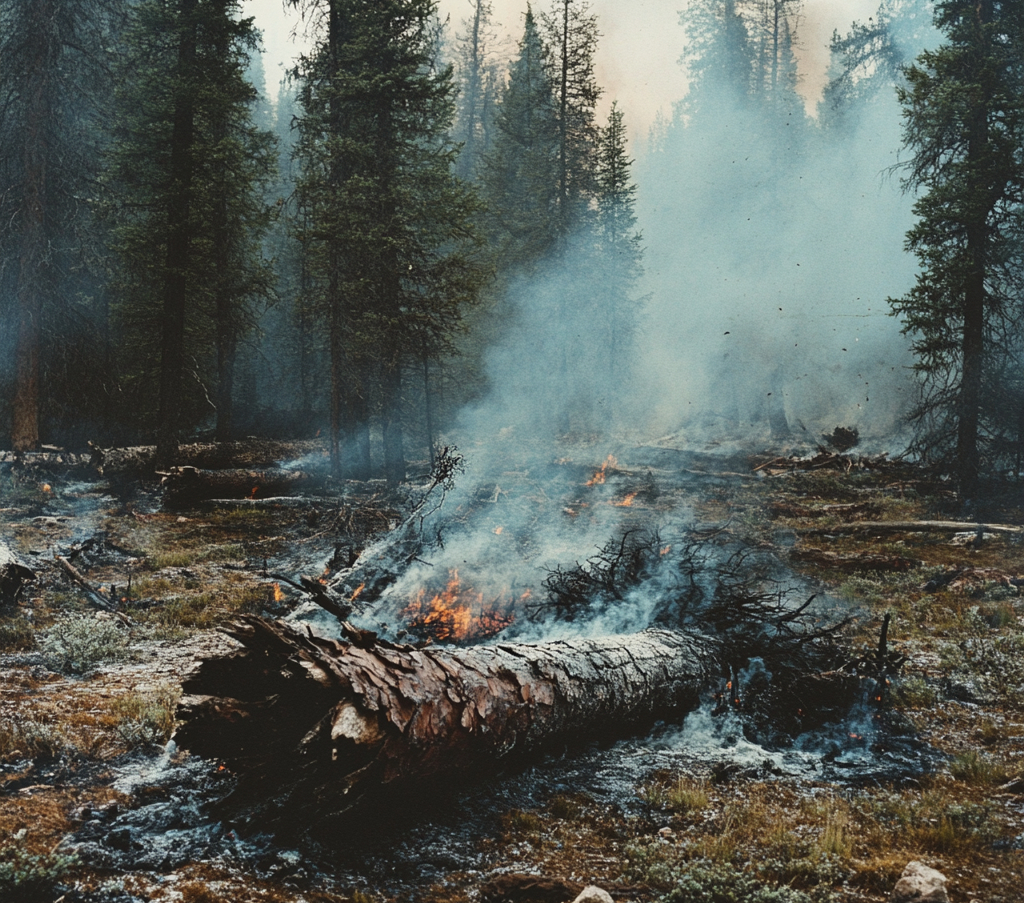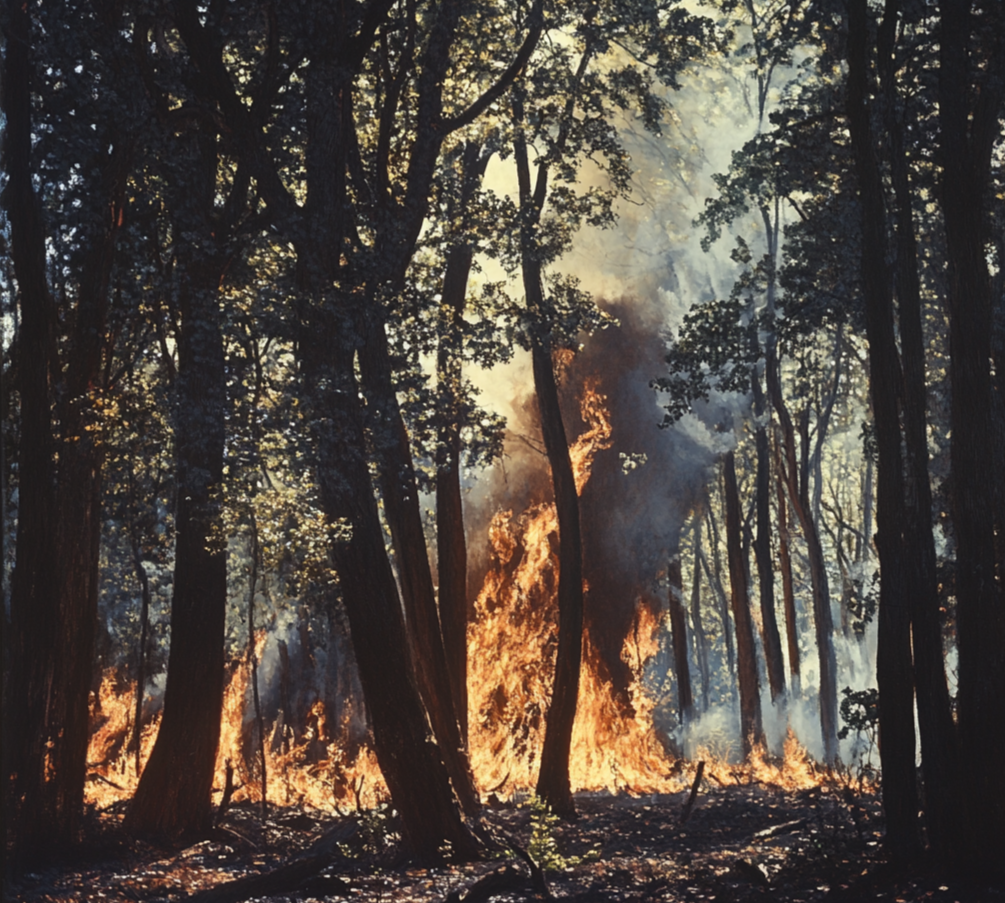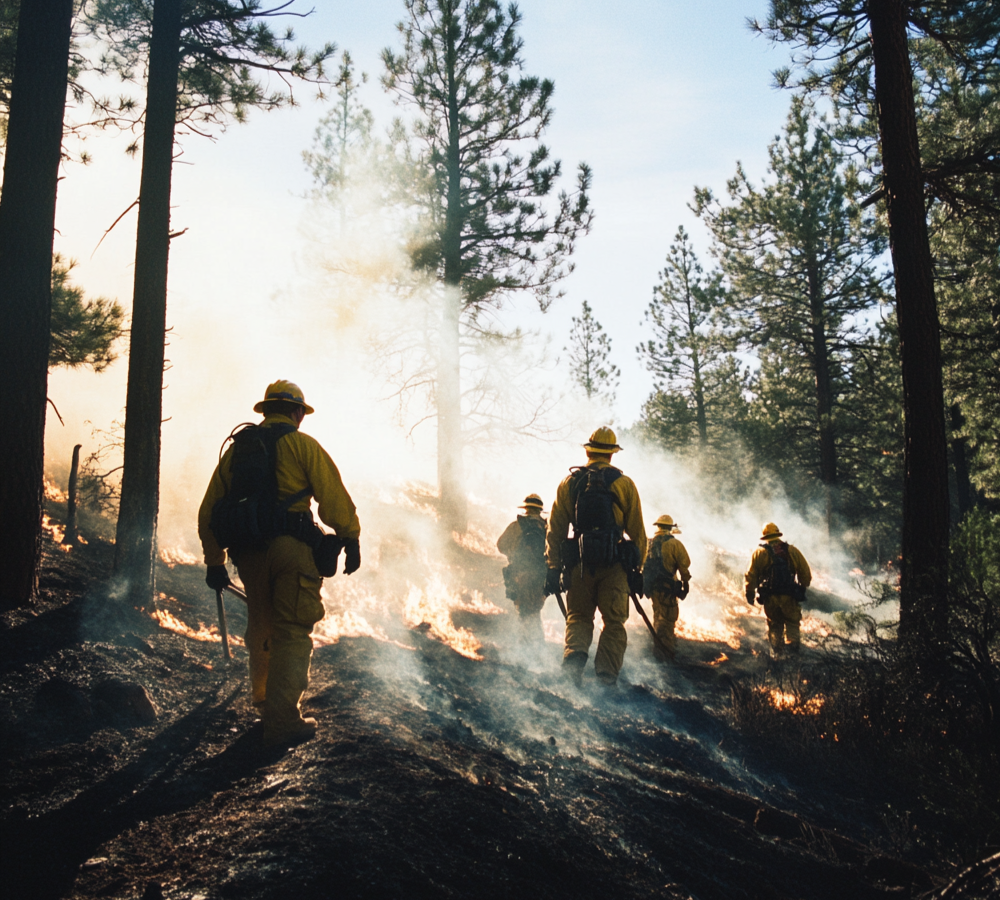How Trees Can Help Prevent Wildfires (And When They Become a Risk)
Wildfires are a growing concern, especially in dry and fire-prone regions. Every year, millions of acres of forests and grasslands burn, causing massive destruction to homes, ecosystems, and communities. But did you know that trees can actually help prevent wildfires? When properly managed, forests can slow fire spread, increase moisture retention, and even act as natural firebreaks. However, under certain conditions, trees can also become a major wildfire hazard.
Understanding the dual role of trees in wildfire prevention and risk is crucial for homeowners, landowners, and city planners. In this article, we’ll explore how trees can reduce wildfire risks, when they become dangerous, and how to manage tree landscapes for better fire safety.
To start, let’s take a closer look at how trees can actually serve as natural defenders against wildfires.
How Trees Help Prevent Wildfires

Trees as Natural Firebreaks
One of the most effective ways trees contribute to wildfire prevention is by acting as natural firebreaks. These barriers help slow down or even stop the spread of flames, protecting surrounding areas from devastation.
- Well-spaced trees can disrupt the continuity of fuel, slowing fire spread.
- Deciduous trees (such as oaks and maples) have high moisture content and resist burning.
- Strategic planting of fire-resistant tree species can act as a buffer against wildfires.
Beyond acting as physical barriers, trees also play a crucial role in maintaining moisture in the environment, further reducing fire risks.
Moisture Retention and Climate Regulation
Fire needs dry fuel to spread quickly, but trees help counteract this by keeping the surrounding environment moist.
- Trees increase soil moisture, reducing fire susceptibility.
- Canopies provide shade, keeping undergrowth from drying out and becoming highly flammable.
- Deep-rooted trees help retain groundwater, preventing drought conditions that exacerbate wildfires.
Another essential factor in wildfire prevention is wind control. Trees can help mitigate fire intensity by reducing wind speeds.
Wind Reduction and Fire Control
When fires spread quickly, wind is often a major contributor. Fortunately, trees can act as windbreaks, helping reduce the intensity of flames.
- Forests act as windbreaks, slowing down the spread of embers.
- Dense tree coverage can disrupt airflow, preventing fires from growing rapidly.
While trees can be a valuable ally in wildfire prevention, they can also become a serious hazard under certain conditions. Let’s explore when trees increase wildfire risks.
When Trees Become a Fire Hazard

Dead or Dying Trees as Fuel Sources
Dead trees are a major concern in wildfire-prone areas. As they dry out, they become highly flammable fuel sources.
- Dead or diseased trees become dry, highly combustible materials.
- Drought stress and infestations with pests such as pine beetles can turn forests into tinderboxes.
- Accumulated dry leaves, needles, and fallen branches increase wildfire risks.
In addition to dead trees, certain species are naturally more flammable than others and can contribute to wildfire spread.
Resinous and Highly Flammable Tree Species
Some trees contain high resin levels, making them more prone to ignition and rapid burning.
- Trees with high resin content, like pines, firs, and eucalyptus, are highly flammable.
- Coniferous trees often ignite faster than deciduous species.
Understanding the most fire-prone trees helps to make sure your landscape is fire-safe.
Poorly Managed Forests and Fire Risk
- Overcrowded forests with thick underbrush create dangerous fire conditions.
- Lack of controlled burns or thinning leads to an excessive buildup of fuel.
- Proper forestry management can significantly reduce fire intensity.
To mitigate these risks, selecting the right trees and implementing fire-resistant landscaping strategies can help.
Fire-Resistant Tree Species and Landscaping Strategies

Best Trees for Fire Prevention
- Deciduous trees (oak, maple, aspen) retain more moisture and resist ignition.
- Hardwoods generally burn slower than softwoods.
- Drought-resistant native trees require less maintenance and naturally reduce fire risk.
Beyond selecting the right tree species, homeowners should also take steps to create defensible space around their properties.
Creating Defensible Space Around Your Property
- Maintain at least 30 feet of defensible space between trees and structures.
- Regularly prune branches to prevent fire from climbing into tree canopies.
- Remove dead or dying vegetation and clear excess debris.
Even ground cover can impact wildfire risk. Choosing the right mulch and plant materials is essential.
Mulching and Ground Cover Considerations
- Use fire-resistant mulch (gravel, rock, or composted mulch) instead of flammable wood chips.
- Keep flammable plants and dry grass away from buildings.
- Fire-resistant ground covers like succulents and low-growing perennials can help prevent fire spread.
While landscaping efforts can go a long way in reducing wildfire risks, proactive forest management practices are also essential.
Managing Trees for Wildfire Prevention

The Role of Controlled Burns
- Prescribed burns help reduce the accumulation of dry, flammable vegetation.
- Fire professionals conduct controlled burns to mimic natural fire cycles.
- Regular burning prevents catastrophic wildfires by clearing excess fuel.
Controlled burns are just one method of maintaining healthy, fire-resistant forests. Another key practice is tree thinning.
Tree Thinning and Fire Mitigation Practices
- Removing select trees and underbrush improves forest health and reduces fire risk.
- Well-spaced trees limit the “ladder effect,” where flames climb from the ground into the canopy.
- Fire-resistant landscaping principles help create safer environments.
For long-term fire safety, regular tree maintenance is essential.
Regular Tree Maintenance and Fire Safety
- Removing dead limbs, overgrown branches, and diseased trees lowers fire risks.
- Professional arborists assess tree health and recommend fire mitigation strategies.
- Seasonal inspections help identify and remove hazardous trees before fire season.
By implementing these fire prevention strategies, homeowners and landowners can significantly reduce wildfire risks while maintaining healthy landscapes.
Conclusion
Trees can be powerful allies in wildfire prevention when properly maintained, helping slow fire spread, retain moisture, and act as natural firebreaks. However, when left unmanaged, trees can become a major wildfire hazard due to accumulated fuel, overcrowding, and highly flammable species.
At Arborist Now, we specialize in wildfire mitigation strategies for homeowners and landowners. Our expert arborists provide fire-resistant landscaping, tree maintenance, and hazard removal services. Contact us today to protect your property and ensure your landscape is wildfire resistant!
We may receive affiliate compensation for some of the links below at no cost to you if you decide to make a purchase.


